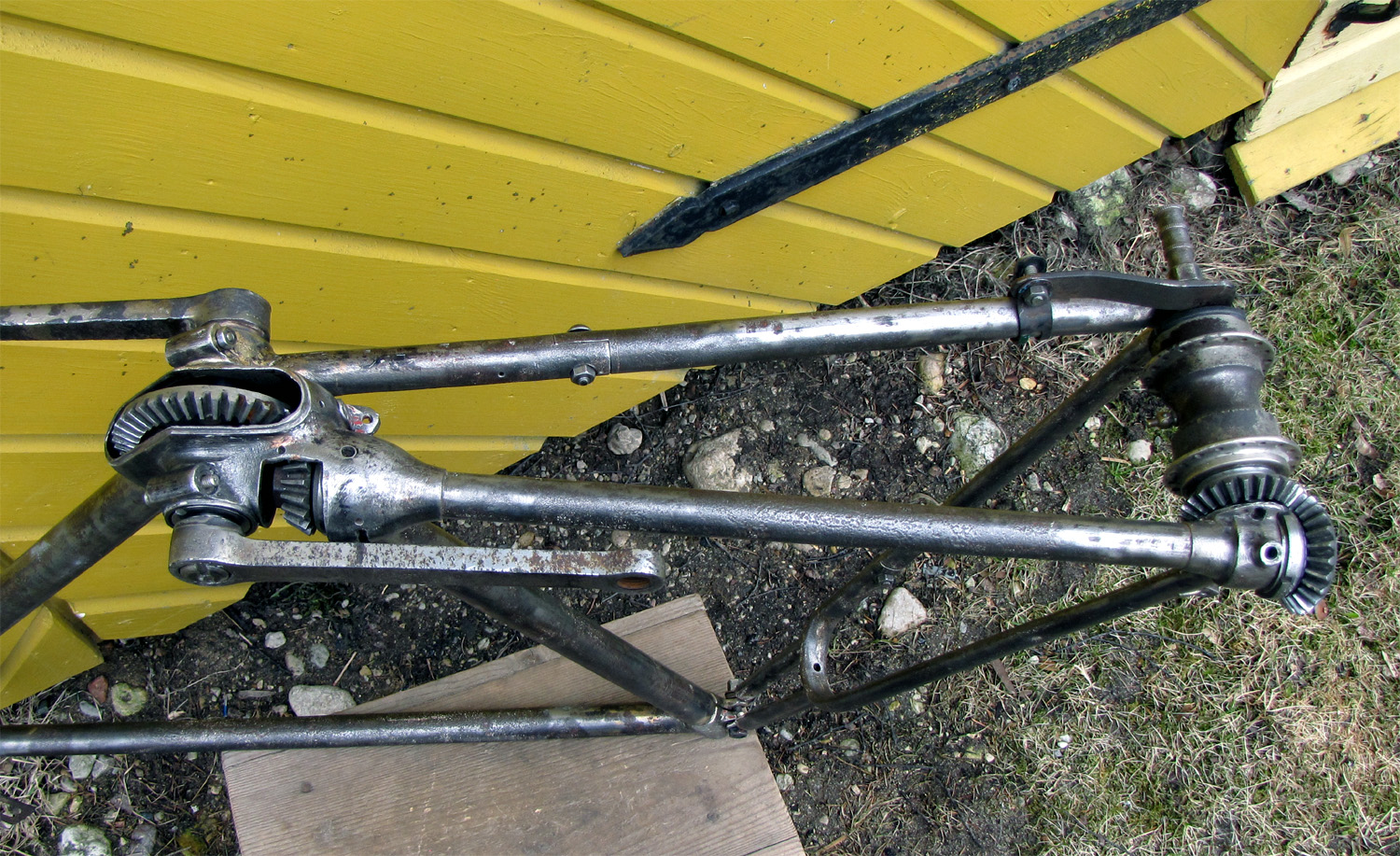Shaft-driven bicycles
In fact, a bicycle with chain drive was not a dominant bike type in the 1910s. Another type produced by several manufacturers was shaft-driven bike. These bicycles had one gear pair near the cranks and another one near the rear wheel, connected by a shaft hidden inside the down tube of the fork.
Various companies manufactured shaft-driven bicycles besides chain drive bikes, in particular prior to the 1920s. Despite their initially promising construction (there was no chain, and hence no danger of getting the trousers caught in it), such bicycles still had several shortcomings. Firstly, production of shaft-driven bicycles was much-more labour-intensive, because the frame part of the shaft and near transmissions had very intricate shape and had many moving parts (bearing cones etc). Secondly, two-step gear transmission caused much greater resistance when pedalling than a singular chain drive. Therefore bike manufacturers discontinued the production of shaft-driven bicycles by the 1920s at the latest (or, in case of some manufacturers, even later) and focused solely on the chain drive bikes. In continental Europe, one of a few exceptions was German manufacturer Dürkopp, which continued to produce shaft-driven bicycles until the 1930s. These bicycles are still made in limited quantity for real enthusiasts, but they differ from the construction which was used before WWII.
A few shaft-driven bicycles preserved in Estonia are in most cases early exemplars from the beginning of the 20th century; sometimes they are without freewheel.

